
views
Creating the Proper Environment

Clean the space. Before beginning work on your office, you’ll have to do some considerable cleaning. This is important regardless of the size of your project, as you’ll want your home office to be neat, tidy, and welcoming. Sweep the floors. Mop the floors. Unless you’re installing hardwood, carpet, or tile, you may want to bleach the concrete floor in your garage. When doing this, make sure to empty the room and keep the garage door and windows open. Dust and wipe down baseboards, walls, and corners. It’s likely that you have a decent bit of dust or cobwebs that have accumulated.
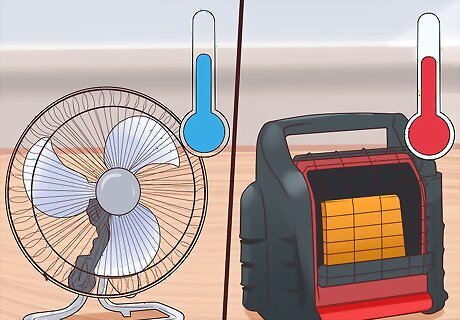
Provide heating and cooling. Wherever you are, it’s very unlikely that your garage has heating or cooling. Because of this, you’ll need to install some sort of HVAC system. Fortunately, there are many options for you to choose from. If you’re on a tight budget in a cooler or temperate climate, you may be able to rely on a fan for cooling. In addition, you may be able to use portable heating units in the winter time. If you’re not doing a complete conversion or you’re on a tight budget, you can install a wall or window unit to provide heating and cooling. If you’re doing a complete garage conversion, you can consider hiring an HVAC specialist to tie your garage into the home’s heating and cooling system. If you're doing a full renovation, you may want to consider adding radiant floor heating to your garage if you live in a colder climate.
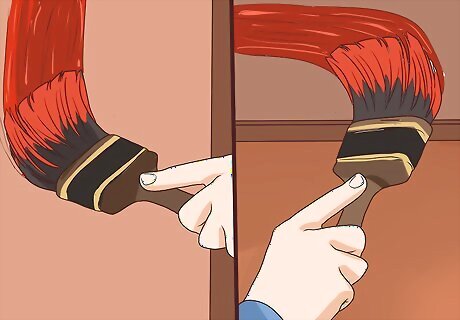
Paint the walls and ceiling. Depending on the age of your home, your garage walls and ceiling might be fairly dirty. As a result, you’ll need to paint them in order to complete your transformation. If you plan to partition a corner of your garage, you might consider just painting that area. If you’re doing a garage conversion in an older home in a humid region, you may need to have the ceiling resurfaced or "remudded" – as the original taping and mudding job might be deteriorating. Unless you’re remodeling the whole room, you may want to paint or stain the concrete floor in your garage.
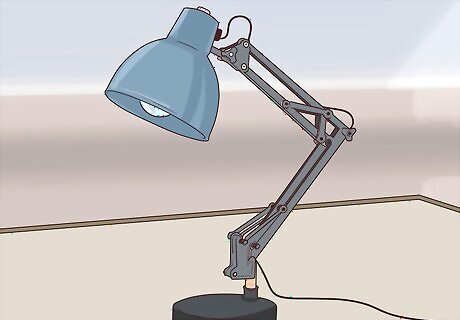
Install lighting. One of the most problematic aspects of creating a home office in your garage is making sure there’s enough light. Depending on your home’s design, it’s highly likely that there aren’t any windows. As a result, you need to make sure you install enough lighting in your new home office. Buy several lamps, both standing and desk, and station them so the room is well lit. If you’re focusing more on a garage conversion, you might consider installing recessed lighting or lighting fixtures in the ceiling.
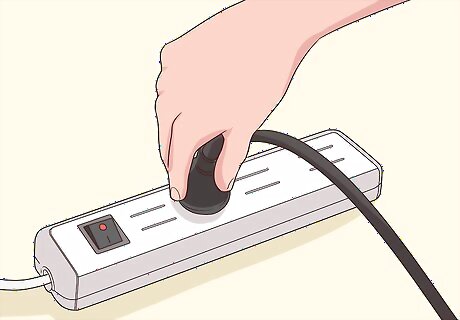
Provide electrical outlets. Depending on the configuration of your garage, you may need to provide electrical outlets. This is important, as many older garages aren't equipped with enough outlets to meet the needs of a home office. Hire an electrician to add outlets where you need them. Use extension cords and power strips to provide more plugs for your home office equipment. However, make sure you don't overload your outlets by plugging too many devices into one.

Purchase a dehumidifier, if necessary. Depending on the climate you live in, you may need to purchase and set up a dehumidifier in your garage. The dehumidifier will decrease the chance of moisture damaging your electronics or harming important paperwork. Measure the relative humidity of your garage. You can buy an inexpensive device at a local box store. Your target humidity level should be between 30% and 50%. If it is higher, you should purchase a dehumidifier. If you notice rust, mildew, or other growth on objects in your garage, you should consider getting a dehumidifier. This is true especially if you don't want a complete remodel. If you live in a tropical or subtropical climate, you'll likely need a humidifier for your garage.
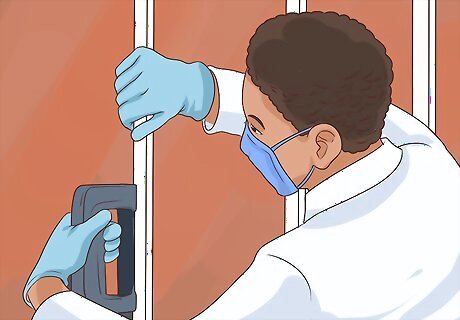
Insulate your walls. If you garage is either unfinished or is not insulated, you should continuing finishing and insulating it. Without insulation, it will cost you a lot more to cool or heat your new office. Many garages are completed without insulating the walls. If you're unsure about whether your garage is insulated, take off a light switch cover and peak into the wall. If it is insulated, you'll see the insulation. Hire a contractor to install insulation and drywall, if needed.
Designing and Decorating
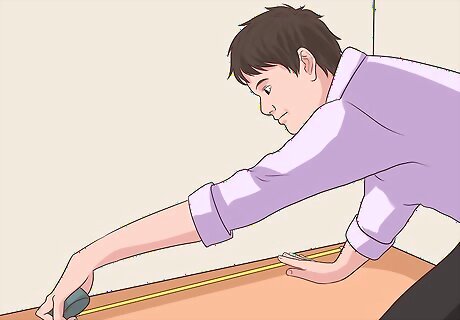
Partition an area. If you’re not planning a complete remodel, you’ll need to partition an area for your office. By partitioning an area, you’ll create a dedicated and delineated work space for yourself. Its boundaries will be clear to you and your family. To partition an area for your office: Measure the area you want to use. You’ll probably want to use a corner of your garage, so you should only have to take two measurements. Purchase standing blinds or partitions to cover about 2/3rds to 3/4ths of the perimeter of your new office space. Position your partitions on two lines so you create a square between them and the garage wall. Leave a hole or two for walkways. Your partitions don’t need to be flush with each other. You’re not keeping anything in or out, but rather delineating the boundaries of your office.
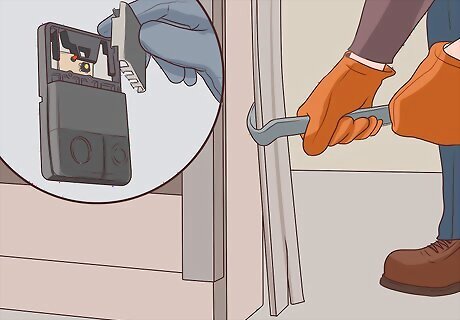
Disguise or remove garage fixtures. Whether you’re doing a medium-sized garage conversion or a small project, you’ll want to address the numerous garage fixtures that are likely present in your garage. Clean the garage door track. If you’ve removed the garage door, remove the track. Remove the garage door button if you’ve removed the garage door. Hide or disguise your hot water heater. This could be as simple as setting up some standing blinds. Remember, make sure they’re at least a few feet from your water heater.

Add artwork. You should also add some artwork to brighten up your office space and give it character. Ultimately, the addition of artwork is a simple way that you can transform your garage into an inviting workspace. Put up your framed diploma, if you want. Pick a few pieces of art that will give some character to your office area. This is important, as having a bare wall will remind you that this is still (or was, in the case of a remodel) a garage. Artwork is known to increase productivity and create a better work environment.
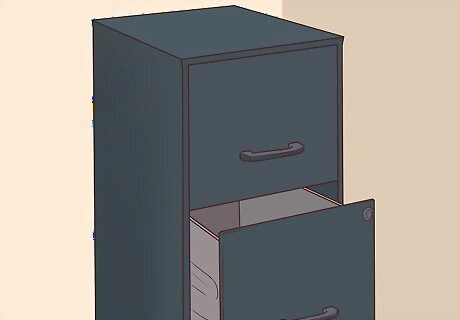
Create storage space. Another basic requirement of a home office is storage space. Without storage space, you won't have room to store files, important documents, and more. Purchase file cabinets for your new office space. Build a custom storage solution to meet your own needs. For example, install shelving that straddles both walls of your new office space. Move or rearrange any existing storage. For example, you may need to remove any shelving that runs the length of the garage walls.
Choosing the Basics for Your Office
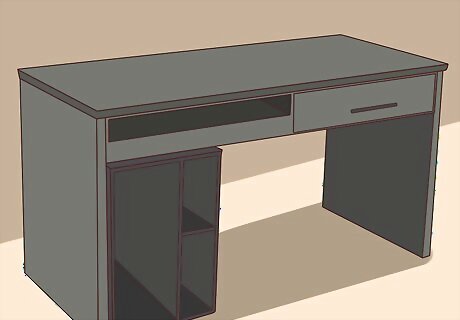
Pick a desk. If the room is still a functioning garage and you haven’t removed the garage door, the room will be subject to more moisture than if it were a fully enclosed part of your home. Thus, you’ll need to pick a desk that is uniquely suited to the environment in your new office. Try to go with a glass-topped metal desk. It will be less susceptible to the elements. If you pick a wood desk, avoid something cheap like particle board – which will warp when exposed to moisture.
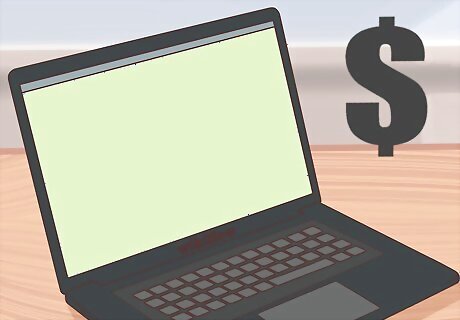
Pick a computer. The unique environment of your office, if unconverted, should also influence the type of computer you use. This is important, as your computer is possibly the most expensive part of your home office set up. Think about purchasing a laptop. This way, when you close for the night or aren’t at home, you can move the laptop inside or take it with you.

Install internet service. Because of its location, your new office won’t likely be wired for internet. Thus, you’ll have to install internet. Fortunately, there are several ways you can do this: Run an Ethernet cable from your router to the garage. If you have a crawlspace, you can drill a hole in the router’s room and run it under the house. Set up a wireless router. This could be tricky, as many routers may not be able to deliver internet long-range. Thus, you may need to purchase a new router that has a longer range. Use range extenders to extend the range of your wireless router. You should also consider adding a phone line, whether it be a traditional phone or a voice over IP phone.
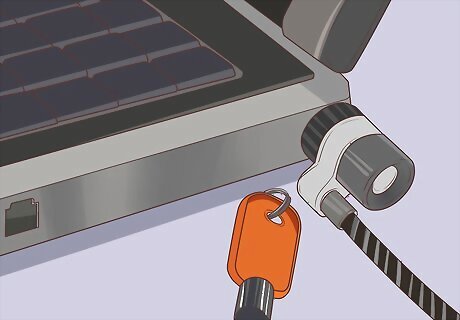
Secure important items. If you're still using your garage as a garage, you'll need to make sure your electronics and important documents are secure. If they're not, you could wind up losing valuable equipment or personal information. Install a safe to store important documents, like tax documents. Purchase Kensington locks or similar devices to secure your computer and electronics to your desk.


















Comments
0 comment